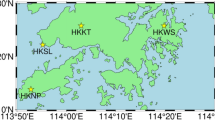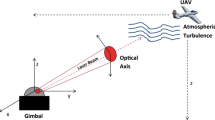Abstract
In both urban and indoor environments, position and navigation technologies that are based on global navigation satellite systems (GNSSs) high requirements for acquisition sensitivity of a GNSS receiver. To increase the acquisition speed and sensitivity of a GNSS receiver, a new method called improved acquisition algorithm with Doppler frequency compensation (IAADFC) is proposed to realize a long coherent integration time (CIT) acquisition algorithm to increase the sensitivity of a GNSS receiver. Its CIT can be larger than the bit length of the navigation message. Based on the parameter estimation theory, the Doppler frequency estimation algorithm (DFEA) is proposed to reduce the Doppler frequency search range (DFSR) to speed-up the acquisition process. Then, the data bit sign transition (DBST) algorithm is proposed to remove the impact of the data bit sign transition to improve acquisition sensitivity. Then, the IAADFC is discussed. Simulation results demonstrate that the IAADFC can improve the sensitivity and speed of weak GNSS signal acquisition. Finally, we provide a detailed comparison between the proposed IAADFC algorithm and the non-coherent integration (NCI) algorithm. Simulation results shown demonstrate that our IAADFC algorithm can detect weaker signals than the NCI algorithm can. This can help meet the high sensitivity requirement for indoor and outdoor seamless position and navigation service.













Similar content being viewed by others
References
Borre K, Akos DM, Bertelsen N, Rinder P, Jensen SH (2007) A software-defined GPS and Galileo receiver. Birkhäuser, Boston
Chen CW, Chen SH, Tsao HW, Mao WL (2014) Memory-based two-dimensional-parallel differential matched filter correlator for global navigation satellite system code acquisition. IET Radar Sonar Navig 8(5):525–535
Elders-Boll H, Dettmar U (2004) Efficient differentially coherent code/doppler acquisition of weak GPS signal. In: Proceedings of the IEEE eighth international symposium on spread spectrum techniques and applications, Sydney, Australia, 30 August–2 September 2004, pp 731–735
Esteves P, Sahmoudi M, Boucheret ML (2016) Sensitivity characterization of differential detectors for acquisition of weak GNSS signals. IEEE Trans Aerosp Electron Syst 52(1):20–37
Gao FQ, Xia HX (2017) Estimation and compensation of Doppler shift in GNSS signal. Radio Eng 47(4):39–43
Jin T, Yang J, Huang Z, Qin H (2014) Navigation signal acquisition method based on multiple DBZP fusion. In: Proceedings of China satellite navigation conference (CSNC), Nanjing, China, 21–23 May 2014, vol II, pp 47–58
Kong S (2015) SDHT for fast detection of weak GNSS signals. IEEE J Sel Areas Commun 33(11):2366–2378
Kong SH, Kim B (2013) Two-dimensional compressed correlator for fast PRN code acquisition. IEEE Trans Wirel Commun 12(11):5859–5867
Li H, Cui XW, Lu MQ, Feng ZM (2008) Dual-folding based rapid search method for long PRN-code acquisition. IEEE Trans Wirel Commun 7(12):5286–5296
Li Z, Li X, Wang H, Wang Q (2015) A new rapid acquisition and tracking technique for high-dynamic spread spectrum signals. In: Proceedings of eighth international conference on internet computing for science and engineering (ICICSE), Harbin, China, 6–8 November 2015, pp 83–86
Ratnam DV, Pasha A, Swathi P, Rao MVG (2013) Acquisition of GPS L1 signals using Cooley-Tukey FFT algorithm. In: Proceedings of IEEE international conference on signal processing, computing and control, pp 1–4
Zhang A, Hu F, He Q, Shen C, Liu F, Kong FR (2014) Doppler shift removal based on instantaneous frequency estimation for wayside fault diagnosis of train bearings. J Vib Acoust 136(2):858–862
Zhu C, Fan X (2014) GNSS signal acquisition in weak signal condition. In: Proceedings of the IEEE international symposium on communication systems, networks & digital signal processing (CSNDSP), Manchester, UK, 23–25 July 2014, pp 1128–1132
Zhu C, Fan X (2015) A novel method to extend coherent integration for weak GPS Signal acquisition. IEEE Commun Lett 19(8):1343–1346
Ziedan NI, Garrison JL (2004) Unaided acquisition of weak GPS signals using circular correlation or double-block zero padding. In: Proceedings of IEEE position location and navigation symposium (PLANS), Monterey, CA, 26–29 April 2004, pp 461–470
Acknowledgements
This material is based upon work funded by Zhejiang Provincial Natural Science Foundation of China under Grant No. LY14F030025 and State Key Laboratory of Geo-information Engineering (No. SKLGIE2017-M-2-3). It is also financially supported by National Natural Science Foundation of China under Grant No. 61402417.
Author information
Authors and Affiliations
Corresponding author
Rights and permissions
About this article
Cite this article
Gao, F., Xia, H. Fast GNSS signal acquisition with Doppler frequency estimation algorithm. GPS Solut 22, 103 (2018). https://doi.org/10.1007/s10291-018-0768-0
Received:
Accepted:
Published:
DOI: https://doi.org/10.1007/s10291-018-0768-0




